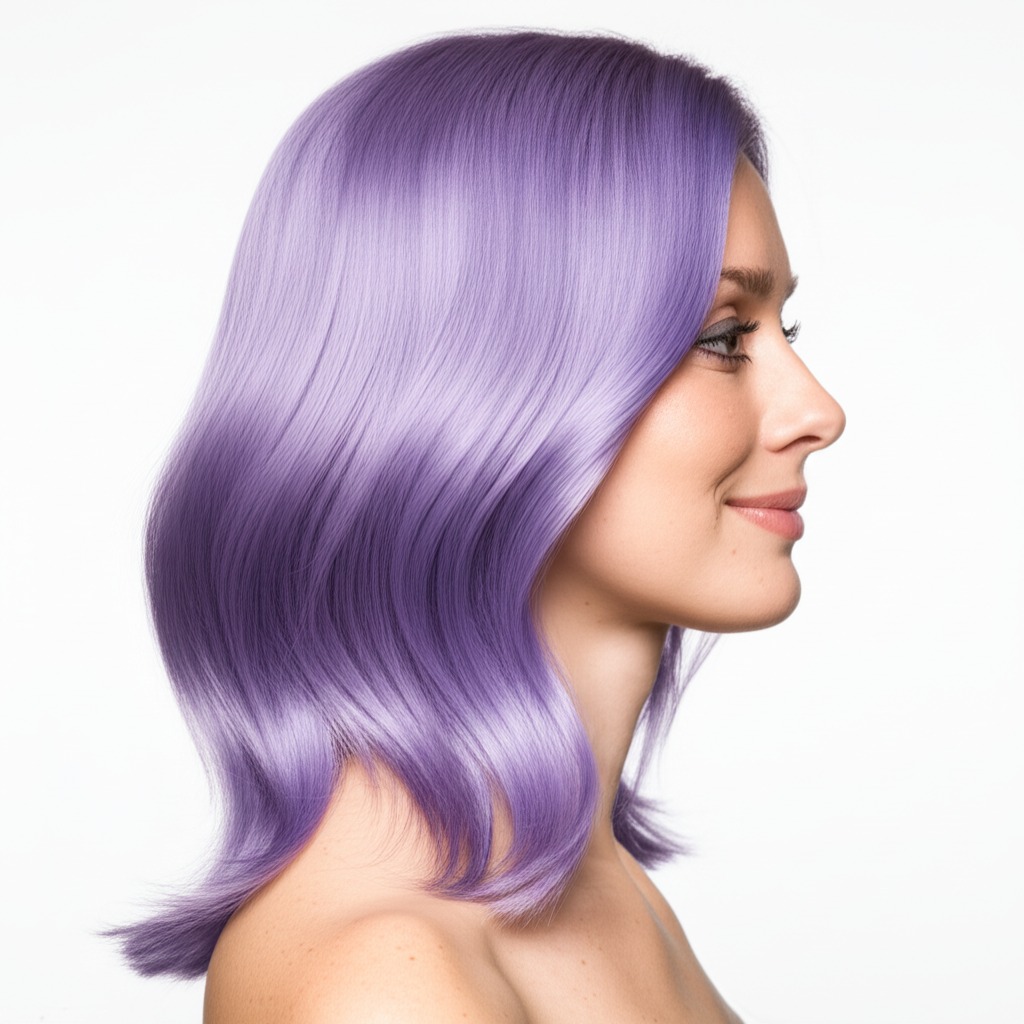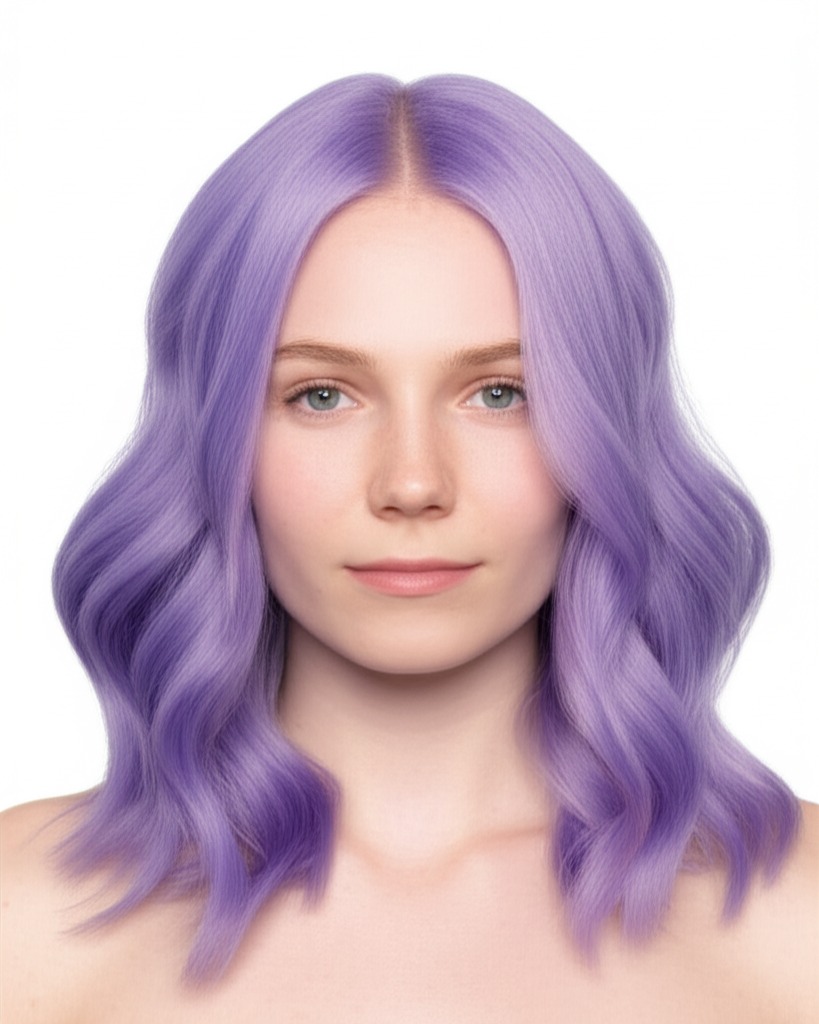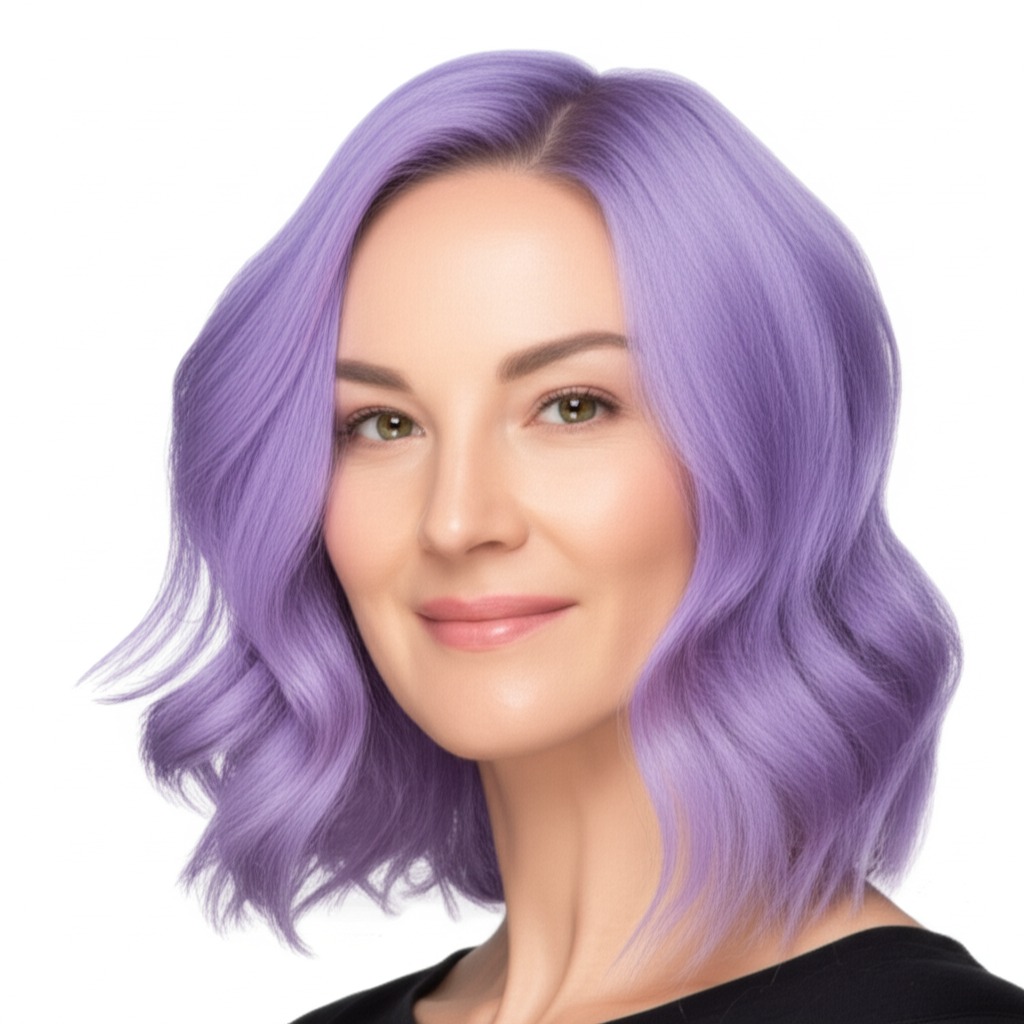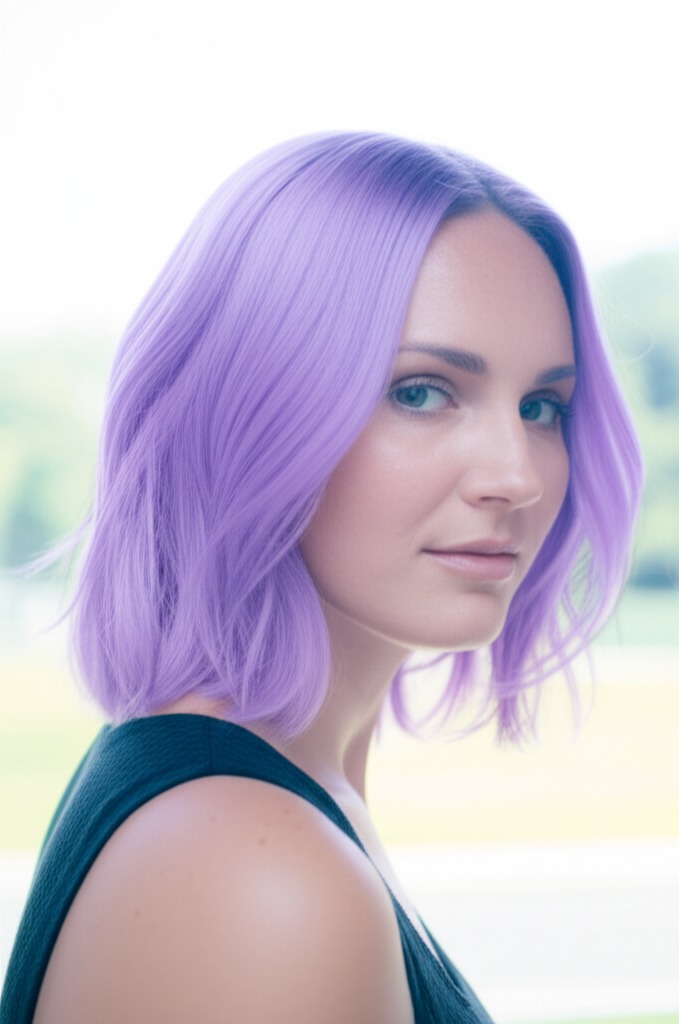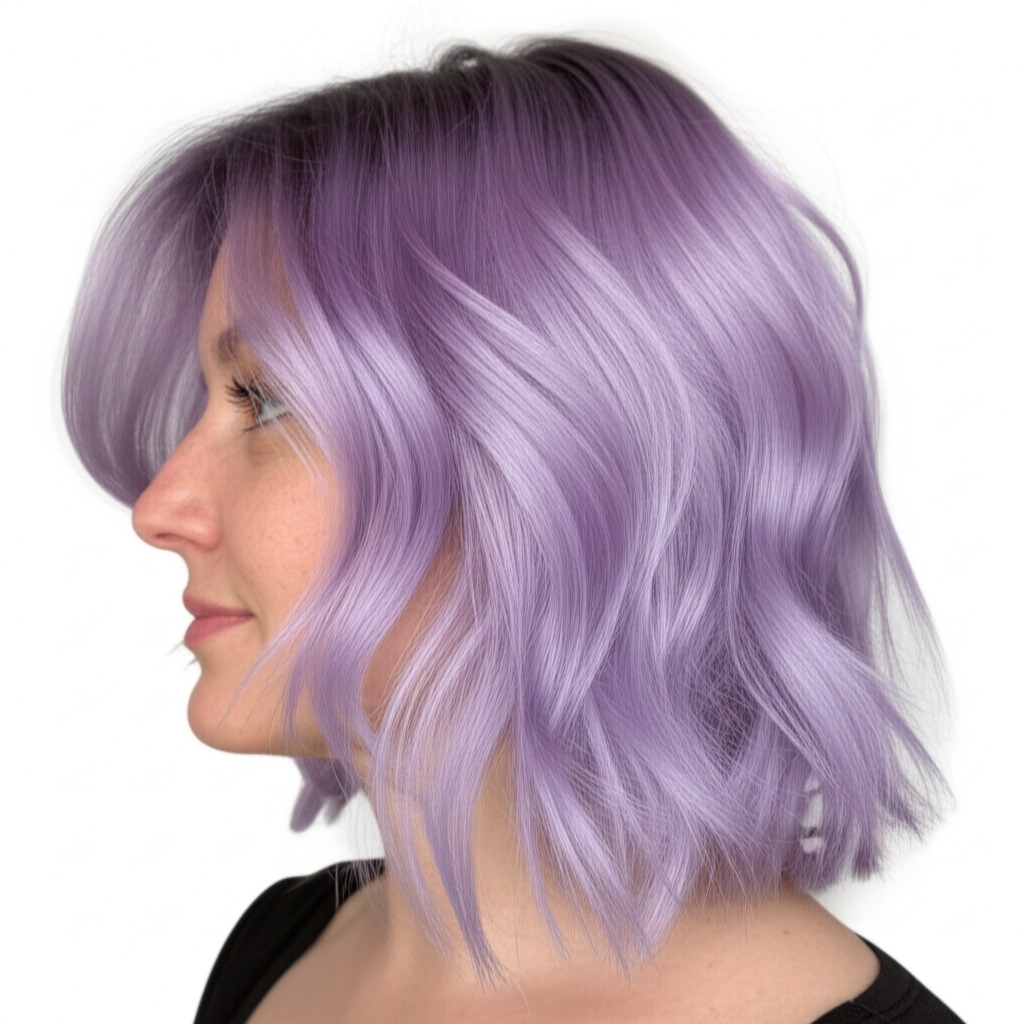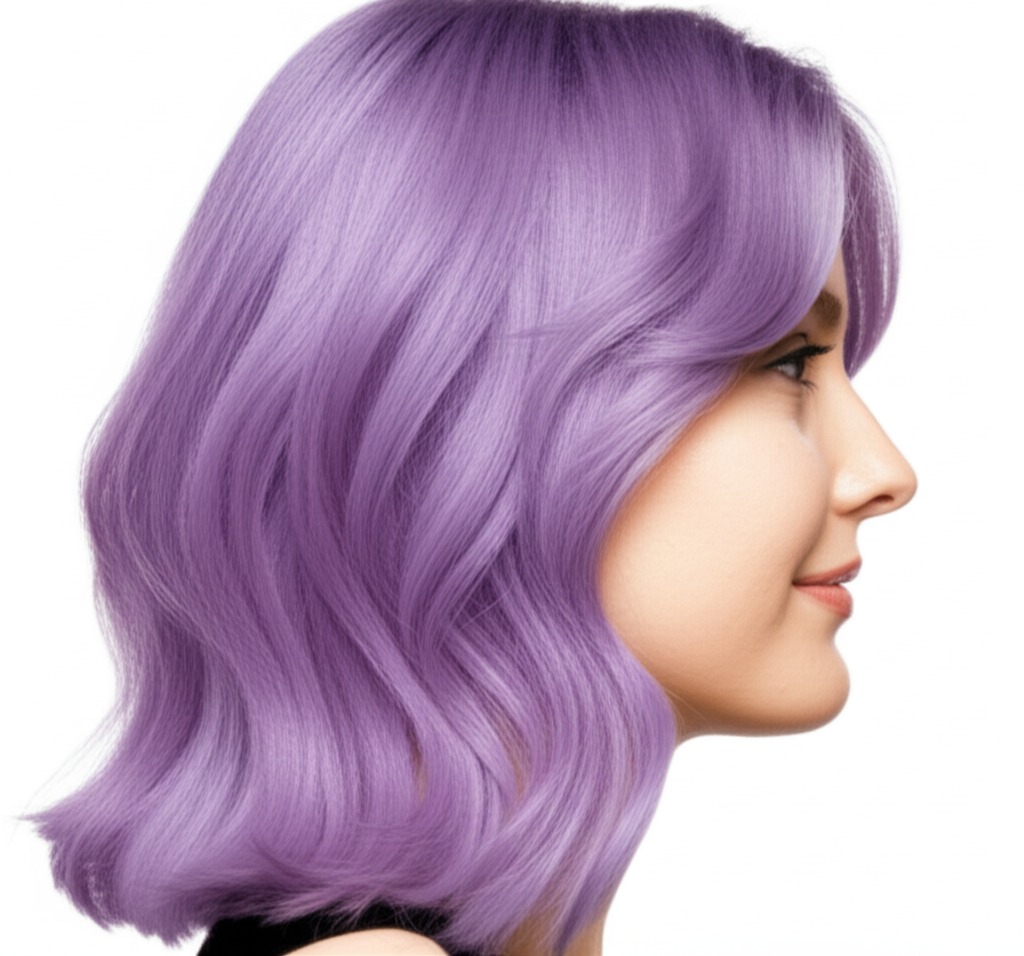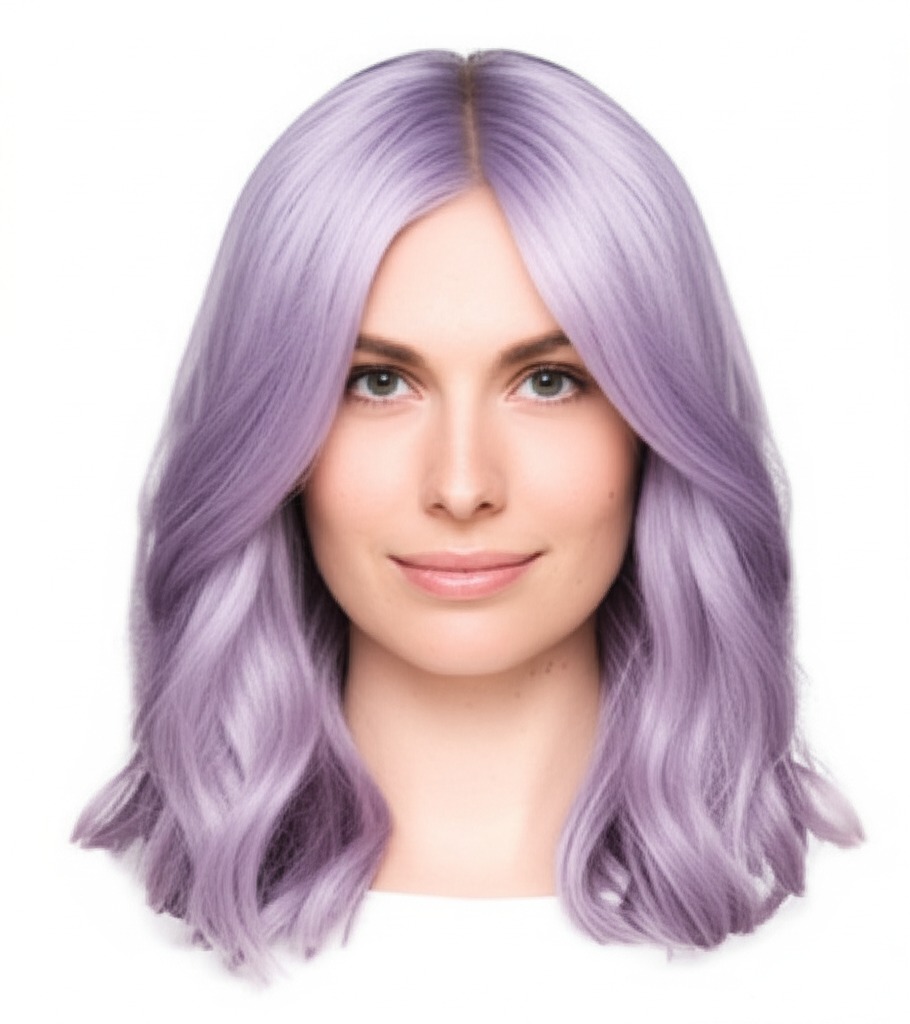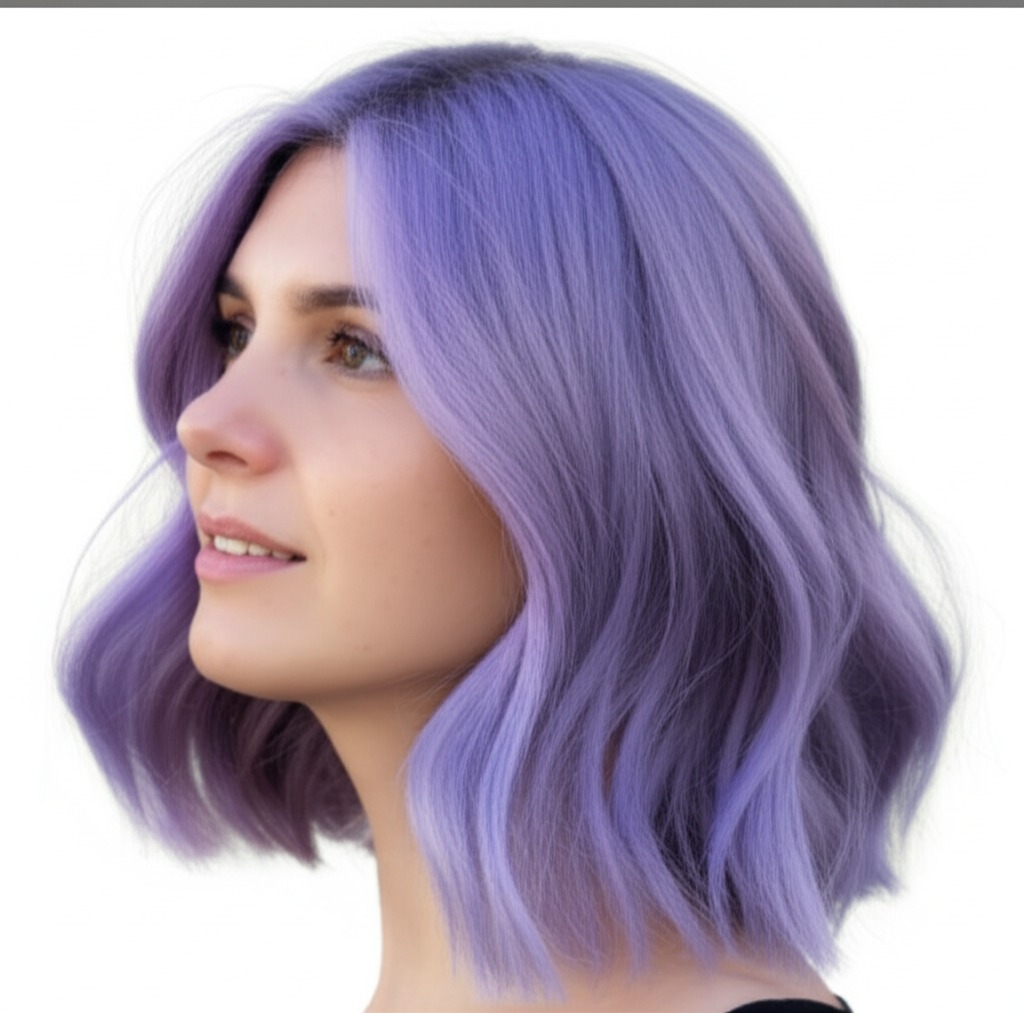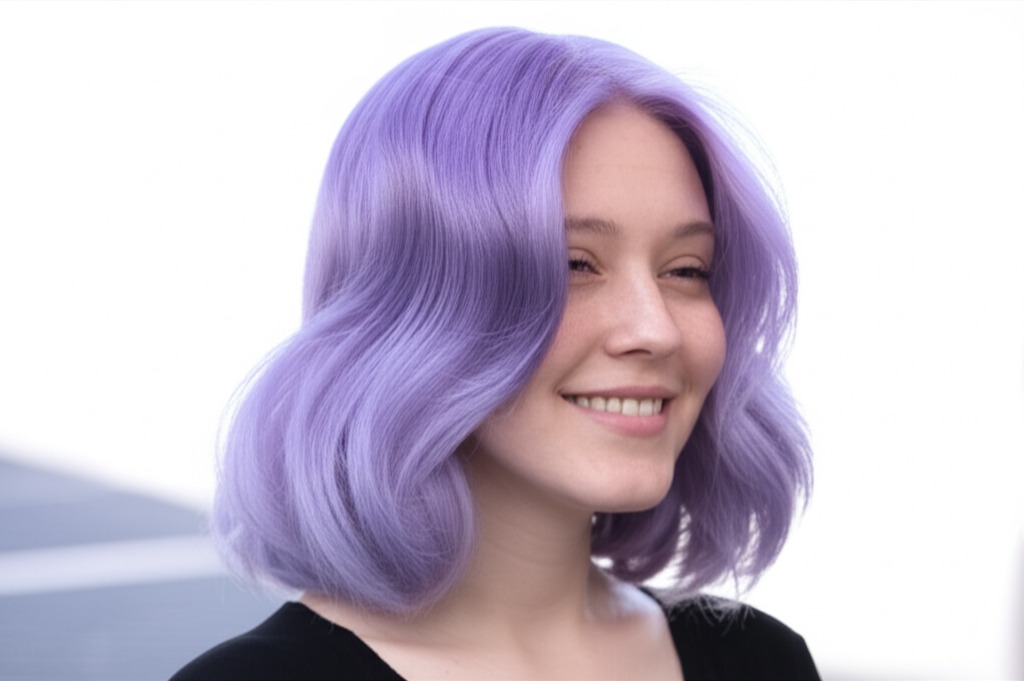#Dive into Dreamy Lavender Hair Color
Lavender hair is having a moment – and for good reason! It’s playful, romantic, and adds a unique pop of personality to any look. But achieving that perfect lavender hue requires more than just grabbing the first purple box you see. This guide will break down everything you need to know about rocking this beautiful color, from understanding its nuances to keeping it looking fresh.
#1. Understanding Lavender: Shades & Depth
Lavender isn’t a single color; it's a family! The key lies in its undertone and depth.
- Undertones: Most lavender shades lean cool. This means they have blue or violet tones, which can sometimes appear more purple depending on lighting. A truly neutral lavender is rare and incredibly difficult to achieve consistently – usually leaning slightly cool is preferable for a flattering result. Warm lavenders (with hints of pink or red) are less common and require careful consideration as they don't always work well with cooler skin tones.
- Depth/Levels: This refers to how light or dark the color is. Levels range from 1 (black) to 10 (lightest blonde). Lavender typically works best on levels 7-10, but can be adapted for darker hair (see "Who it Flatters" below).
- Light Lavender: Levels 9 & 10 - The most ethereal and pastel look. Requires the most pre-lightening.
- Mid-Tone Lavender: Level 8 – A more balanced shade, offering a bit more depth and richness.
- Deep Lavender (Lilac): Level 7 – A bolder choice that can work on darker bases with less lightening needed.
#2. Who Does Lavender Hair Flatter?
Finding the right lavender for you is key to looking your best!
- Skin Tone & Undertone:
- Cool Skin Tones (pink, red, or blue undertones): You’re likely a natural fit! The cool tones in lavender will complement your complexion. Think fair skin with rosy cheeks or olive skin with cooler undertones.
- Neutral Skin Tones: Can often pull off various lavenders but might need to adjust the shade slightly (leaning more towards a true lavender rather than a warm one).
- Warm Skin Tones (golden, yellow, or peach undertones): Can be trickier. A very cool-toned lavender can sometimes wash you out. Consider a lilac-leaning lavender with subtle pink tones to soften the contrast and bring warmth back to your face.
- Eye Color: Lavender enhances many eye colors!
- Blue/Gray Eyes: The purple hues will make them appear even more vibrant.
- Green Eyes: Lavender creates a stunning, contrasting effect that highlights green eyes beautifully.
- Brown Eyes: Can look gorgeous with lavender, especially if you choose a mid-tone or deeper shade.
- Natural Hair Level Starting Point:
- Levels 4-6 (Dark Brown to Medium Brown): Requires significant lightening – multiple sessions are likely needed for a pastel result. Consider starting with a lilac base and building up the lavender tone gradually.
- Levels 7-10 (Light Brown to Blonde): The ideal canvas! Less pre-lightening is required, allowing for more vibrant and accurate lavender tones.
#3. Technique Options: From Subtle to Statement
The application technique dramatically impacts the final look.
- Single Process: A uniform color applied all over. Best suited for those with already light hair (levels 8-10) wanting a solid lavender hue.
- Highlights/Lowlights: Adding lighter or darker strands of lavender creates dimension and visual interest. Good for adding subtle pops of color.
- Babylights: Very fine, delicate highlights that mimic the look of sun-kissed hair. Creates a soft, blended lavender effect.
- Gloss/Toner: Used to adjust the tone of existing blonde or lightened hair. Essential for achieving the perfect lavender shade and adding shine. A gloss can also deposit color over previously dyed hair if your base is close enough in level.
- Balayage-Effect: Hand-painted highlights create a soft, blended look with no harsh lines. Ideal for a natural, lived-in lavender vibe.
- Solid vs. Blended: Solid applications are bold and impactful. A blended approach (balayage or babylights) offers more subtlety and easier grow-out.
#4. Maintenance & Longevity: Planning Ahead
Lavender isn’t the lowest maintenance color, but with proper care, you can keep it looking its best!
- Wash Frequency: Less is more! Aim for 2-3 washes per week using cool water.
- Toner Refresh: Lavender fades quickly. Expect to tone your hair every 4-6 weeks to maintain the vibrancy and prevent brassiness (see "Common Pitfalls").
- Root Growth Pacing: If you lighten your hair significantly, root regrowth will be noticeable. Discuss with your stylist how to strategically blend roots for a more gradual transition.
- Budget/Time Planning: This color typically requires multiple salon visits initially (especially if significant lightening is needed). Budget $200-$500+ per initial appointment and $100-$300+ for toner touch-ups. Time commitment: 2-4 hours for the initial process, 1-2 hours for toning.
#5. Seasonality & Pairing with Cuts
Lavender's versatility shines through with different cuts and seasonal tweaks!
- Bob/Lob: A blunt bob or lob looks incredibly chic with a lavender hue, especially when paired with balayage highlights.
- Long Layers: Lavender on long layers creates movement and dimension – perfect for showcasing the color’s depth.
- Pixie Cut: A bold choice! Short pixie cuts can handle a vibrant lavender look, but require precise placement to avoid looking harsh.
- Seasonal Tweaks: Lighter, pastel lavenders are ideal for spring and summer. Deeper lilac shades work beautifully in fall and winter.
- Event/Occasion Picks:
- Work: A muted, mid-tone lavender or a balayage effect is generally more professional.
- Daytime: A playful pastel lavender can brighten up your look.
- Evening: Go bold with a vibrant, light lavender for a statement-making style!
- Weddings: Lavender looks romantic and ethereal – perfect for wedding guests or even the bride (depending on the vibe!).
#6. At-Home Care: Protecting Your Investment
Proper at-home care is crucial for maintaining your lavender color.
- Sulfate-Free Shampoo & Conditioner: Sulfates strip color, causing it to fade faster.
- Clarifying Cadence: While sulfate-free shampoos are great, buildup can occur. Use a clarifying shampoo sparingly (once every 4-6 weeks) to remove residue and restore shine.
- Heat Protection: Always use heat protectant spray before styling with hot tools!
- Color-Safe Styling Products: Avoid products containing harsh chemicals that can damage color.
- Product Checklist:
- Sulfate-free shampoo & conditioner
- Color-safe heat protectant
- Purple shampoo (for toning – see "Common Pitfalls")
- Deep conditioning mask
#7. Common Pitfalls: Prevention is Key
Let's avoid these common lavender hair mishaps!
- Brassiness: Purple tones can sometimes oxidize and turn brassy over time. Use a purple shampoo once or twice a month to neutralize yellow/orange undertones.
- Banding: Uneven lightening can create noticeable bands of color. Professional application is key to prevent this.
- Patchiness: Insufficient pre-lightening can result in patchy, uneven lavender coverage.
#8. Pros & Cons: Weighing the Options
Pros:
- Unique and Stylish: Lavender hair stands out from the crowd!
- Versatile: Can be adapted to suit various styles and personalities.
- Enhances Features: Complements many skin tones and eye colors.
Cons:
- High Maintenance: Requires regular toning and careful at-home care.
- Fade Risk: Lavender fades quickly, especially with frequent washing or heat styling.
- Significant Lightening Needed (for darker hair): Can be damaging to the hair if not done properly.
#9. Salon Consultation Script: Setting Expectations
Before committing to lavender hair, a thorough consultation is essential! Here are some prompts for your stylist:
- "I'm interested in getting lavender hair. What shade would you recommend based on my skin tone and natural color?"
- "How much lightening will be required? How many sessions do we need?"
- “Can you show me photos of different lavender shades and techniques?”
- "What’s the best way to maintain this color at home, and how often should I come in for touch-ups?"
- "Let's discuss a plan for root growth – what are my options as it grows out?"
#10. FAQs: Your Lavender Questions Answered
- Can I go lavender if I have dark brown hair? Yes, but it will require significant lightening and multiple salon visits.
- How long does lavender hair last? The color itself fades within 4-8 washes depending on the intensity and your care routine. Toner is needed every 4-6 weeks to maintain vibrancy.
- Is purple shampoo really necessary? Yes! It helps neutralize brassiness and prolongs the lavender tone.
- Can I do this at home? While possible, achieving a professional result requires expertise in color theory and lightening techniques. It's best left to the pros, especially for significant changes.
- Will lavender hair damage my hair? Lightening always causes some level of damage. Proper care and protein treatments can minimize this.
- Can I get lavender highlights on already-colored hair? Yes, but a color analysis is needed to determine compatibility and avoid unwanted tones.
